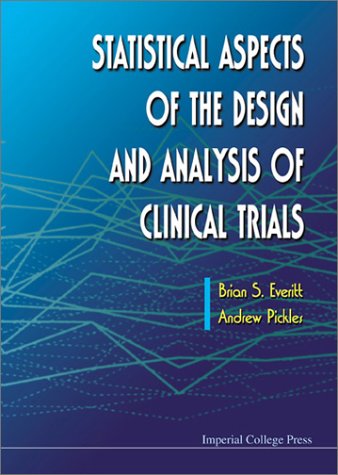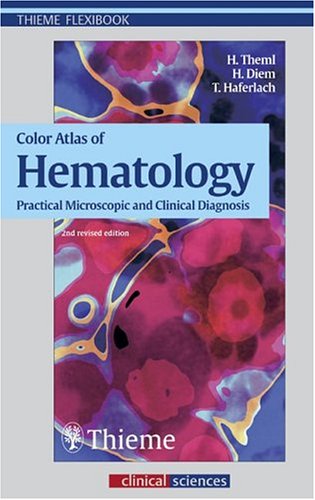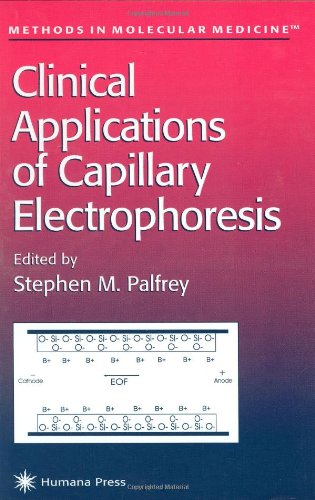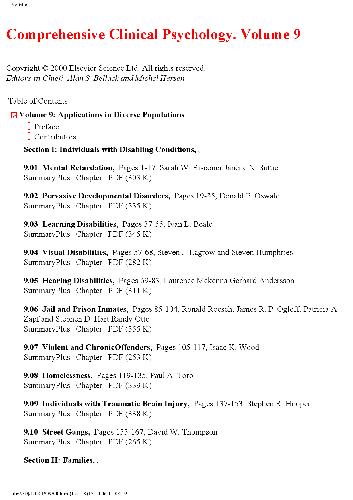Brian S. Everitt, Andrew Pickles1860941532, 9781860941535
Table of contents :
PREFACE……Page 6
CONTENTS……Page 8
1.1. INTRODUCTION……Page 16
1.2. A BRIEF HISTORY OF CLINICAL TRIALS……Page 17
1.3. TYPES OF CLINICAL TRIAL……Page 20
1.4. ETHICS OF CLINICAL TRIALS……Page 24
1.6. SUMMARY……Page 31
2.2. TREATMENT ASSIGNMENT METHODS……Page 33
2.2.1. Simple Randomisation……Page 36
2.2.2. Blocked Randomisation……Page 37
2.2.3. Stratified Randomisation……Page 39
2.2.4. Minimisation Method……Page 41
2.2.5. Unequal Randomisation……Page 42
2.3. THE SIZE OF A CLINICAL TRIAL……Page 44
2.4. REPORTING RESULTS……Page 48
2.5. SUMMARY……Page 50
3.1. INTRODUCTION……Page 52
3.2. OUTCOME MEASURES……Page 54
3.3. COMPLIANCE, DROPOUTS AND INTENTION-TO-TREAT……Page 56
3.3.1. Intention-to-Treat……Page 60
3.3.2. A Taxonomy of Dropouts……Page 65
3.4. INTERIM ANALYSES IN CLINICAL TRIALS……Page 69
3.4.1. Group Sequential Procedures – A Bayesian Perspective……Page 80
3.5. SUMMARY……Page 82
4.1. INTRODUCTION……Page 84
4.2. A BRIEF REVIEW OF BASIC STATISTICS……Page 85
4.3. GENERALISED LINEAR MODELS……Page 92
4.3.1. Models for Counts: the Treatment of Familial Adenomatous Polyposis (FAP) with a Non-Steroidal Anti-Inflammatory Drug……Page 98
4.3.2.1. Models with parallel linear predictors……Page 104
4.3.2.2. Non-parallel models……Page 105
4.3.2.3. Model estimation……Page 106
4.4. MULTIPLE ENDPOINTS……Page 108
4.5.1. Measuring Costs……Page 112
4.5.2. Analysis of Cost Data……Page 114
4.5.4. An Example: Cognitive Behavioral Therapy……Page 116
4.6. SUMMARY……Page 121
5.1. INTRODUCTION……Page 123
5.2. GRAPHICAL METHODS FOR DISPLAYING LONGITUDINAL DATA……Page 124
5.3. TIME-BY-TIME ANALYSIS OF LONGITUDINAL DATA……Page 133
5.4. RESPONSE FEATURE ANALYSIS OF LONGITUDINAL DATA……Page 135
5.4.1. Choosing Summary Measures……Page 136
5.4.2. Incorporating Pre-Randomisation, Baseline Measures into the Response Feature Approach……Page 144
5.4.3. Response Feature Analysis when the Response Variable is Binary……Page 149
5.5. SUMMARY……Page 157
6.1. INTRODUCTION……Page 158
6.2. SOME GENERAL COMMENTS ABOUT MODELS FOR LONGITUDINAL DATA……Page 159
6.3. MISSING VALUES AND LIKELIHOOD-BASED INFERENCE FOR LONGITUDINAL DATA……Page 162
6.4. MAXIMUM LIKELIHOOD ESTIMATION ASSUMING NORMALITY……Page 164
6.5.1. Oestrogen Patches in the Treatment of Post-Natal Depression……Page 166
6.5.2. Post-Surgical Recovery in Young Children……Page 176
6.6. ANOVA AND MANOVA APPROACHES TO THE ANALYSIS OF LONGITUDINAL DATA……Page 182
6.7. INFORMATIVE DROP OUTS……Page 183
6.8. OTHER METHODS FOR THE ANALYSIS OF LONGITUDINAL DATA……Page 188
6.9. SUMMARY……Page 190
7.1. INTRODUCTION……Page 193
7.2. MARGINAL MODELS……Page 194
7.2.1. Marginal Modelling using Generalised Estimating Equations……Page 198
7.3. RANDOM EFFECTS MODELS……Page 208
7.4. TRANSITION MODELS……Page 212
7.5. A COMPARISON OF METHODS……Page 216
7.6. MISSING DATA AND WEIGHTED ESTIMATING EQUATIONS……Page 217
7.6.1. Missing Data in a Longitudinal Clinical Trial with an Ordinal Response……Page 218
7.7. SUMMARY……Page 221
8.1. INTRODUCTION……Page 223
8.2.1. Survivor Function……Page 224
8.2.2. The Hazard Function……Page 234
8.3. REGRESSION MODELS FOR SURVIVAL DATA……Page 235
8.4. ACCELERATED FAILURE TIME MODELS……Page 237
8.5.1. Proportional Hazards……Page 240
8.5.2. The Semi-parametric Proportional Hazard or Cox Model……Page 241
8.5.3. Cox Model Example……Page 244
8.5.4. Checking the Specification of a Cox Model……Page 247
8.5.5. Goodness-of-fit Tests……Page 255
8.5.6. Influence……Page 256
8.6.1. Modelling with Time-Varying Covariates……Page 257
8.6.2. The Problem of Internal or Endogeneous Covariates……Page 258
8.6.3. Treatment Waiting Times……Page 259
8.7.1. Stratification……Page 260
8.7.2. Matching……Page 261
8.7.3. Cluster Sampling……Page 262
8.8. CENSORING AND COMPETING RISKS……Page 263
8.9. AUXILIARY VARIABLES……Page 264
8.10. FRAILTY MODELS……Page 265
8.11.1. An Example of the Application of an Interim Analysis Procedure for Survival Data……Page 266
8.12. DESCRIBING THE RESULTS OF A SURVIVAL ANALYSIS OF A CLINICAL TRIAL……Page 267
8.13. SUMMARY……Page 268
9.1. INTRODUCTION……Page 270
9.2. BAYESIAN ESTIMATION……Page 272
9.3. MARKOV CHAIN MONTE CARL0 (MCMC)……Page 274
9.4. ADVANTAGES OF THE MCMC APPROACH……Page 275
9.4.1. Model Parametrisation and Scientific Inference……Page 276
9.4.3. Prior Distributions as a Numerical Device……Page 277
9.4.4. Alternative Models and Model Selection……Page 278
9.5. A NUMERICAL EXAMPLE OF USING BAYESIAN ESTIMATION……Page 279
9.7. PRIORS AND STOPPING RULES FOR TRIAL MONITORING……Page 283
9.7.1. Clinical Demands……Page 284
9.7.2. Clinical Beliefs……Page 286
9.8.1. The Prior as a Handicap……Page 287
9.8.2. Recognising Heterogeneity in Priors: Enthusiasts and Sceptics……Page 288
9.9. SAMPLE SIZE ESTIMATION FOR EARLY PHASE TRIALS……Page 290
9.10. REPORTING OF RESULTS……Page 293
9.11. SUMMARY……Page 294
10.1. INTRODUCTION……Page 295
10.2. SELECTION OF STUDIES – WHAT TO INCLUDE……Page 297
10.3. THE STATISTICS OF META-ANALYSIS……Page 305
10.4.2. The Effectiveness of Aspirin in Preventing Death after a Myocardial Infarction……Page 312
10.5. BAYESIAN META-ANALYSIS……Page 315
10.6. META-ANALYSIS IN MORE COMPLEX SETTINGS……Page 317
10.7. SUMMARY……Page 318
APPENDIX Software……Page 320
REFERENCES……Page 326
Index……Page 348







Reviews
There are no reviews yet.